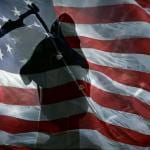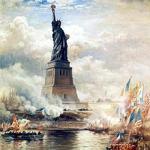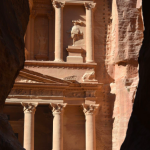Maya Angelou has told the world, through the Washington Post, that the Reverend Dr. Martin Luther King, Jr. looks “like an arrogant twit,” in his 30-foot high statue that stands on Washington’s National Mall.
Angelou blames the condensed quote at the base — “I was a drum major for peace, justice and righteousness” — but the problems are far more extensive. In life, King generally wore a mild, reflective expression. In marble, he’s scowling like Ozymandias, arms folded across his chest. He could be staring down the Boers carved into the Voortrekker Monument in Pretoria. Though King’s build did, in fact, run toward stocky, he carried the extra weight well. The artist has padded his subject to the point where he looks like an obese man with a gifted tailor. (In fairness, this effect may simply be the result of having to look up directly into the figure’s waistline.)
No doubt about it — King deserves better from the nation. But before we band together and resolve to drive the scuptor’s own chisel through his frontal lobe, it’s worth reflecting on some of the technical and moral problems involved in capturing human greatness.
Let’s start with the basics — selecting a pose is hard. It won’t do to show a subject just standing there, hands at his sides. That would look like a mug shot, at best. When the subject is a person of great historical significance, suggesting dynamism is even more important. You don’t want future generations thinking, “Geez, what a stiff he must have been!”
The best artists have always used small touches to hint at great capacity for action. Michelangelo’s David is cocking his knee ever so slightly and raising his hand to his shoulder. He looks languid, but he could, plausibly, snap into action at a moment’s notice and hurl a rock through somebody’s skull. Any lacrosse coach would weep with joy to sign him. If the sculptor borrowed his subject from the Jews, he took his technique from the Greeks and Romans. The same mixture of grace and power informs the statue of Caesar Augustus that now stands in the Vatican.
But that formula has not served all artists, or all subjects, equally well. When it came to immortalizing great leaders, baroque-era European artists tended to sacrifice motion for stateliness — a word, remember, which means “standing still.” When the subject was a ruler, stillness had political significance. As continental kings solidified their power with the help of standing armies and bureaucracies, they began to see themselves as hubs of frenzied activity, but not participants in it. Louis XIV was the Sun King around whom lesser bodies danced attendance. Like Paulie in Goodfellas, he might have moved slowly, but that was because he didn’t have to move for anyone.
To make subjects look grand without looking boring, artists developed a new series of conventions. They stuck people on horseback, as Velazquez did Phillip IV of Spain, or twisted them into three-quarters view, placing hand regally on hip, as Rigaud did Louis XIV. But the problem with these poses is, they look horribly dated; their cultural and political baggage weighs them down. It’s hard to look at Callet’s portrait of Louis XVI — where the king is raising his arm, arching his eyebrows and flaring his nostrils imperiously — and not think, “Smug bastard. How ya feel now?”
These traditions can’t help but bedevil American artists who want to do justice to their heroes. We’re a democratic nation so roi-soleil poses are out. Greco-Roman poses lose some of their power on men who wear a lot of clothes, as most of our worthies, with the exception of Ben Franklin, have tended to do. Washington’s easy — as a former general, he naturally belongs on a horse. Teddy Roosevelt was ham enough to make any posture plausible. Daniel Chester French’s decision to depict Lincoln sitting down was a brilliant stroke. Not only did French deal tactfully with Honest Abe’s bizarre proportions, he managed to make him look somber enough that nobody, not even the bitterest Southern populist, could resent him for being enthroned.
King admits of no such obvious approaches. None of the stock poses really works for him. He was a clergyman and peace activist, not a general; a King, not a king. You couldn’t get away with sticking him on horseback, not even if you were trying to evoke the Montgomery bus boycott.
In hindsight, a biblical theme would seem to have been appropriate. But which one? Sorry, but Jesus is out. Moses, who first went to the mountaintop, would have been a good choice, but without a staff or a pair of tablets, what makes Moses, Moses? (Horns would be a bad idea here.) Probably, the thing would have been to depict King with chin and eyes upraised, looking hopeful but pensive as he scans far horizons for a glimpse of the Promised Land. His firsts could be balled, but only in determination — not to slug anyone.
What we’ve got is bad, but it could have been worse. Given the quote, we should feel relieved to note King’s not twirling a baton.










